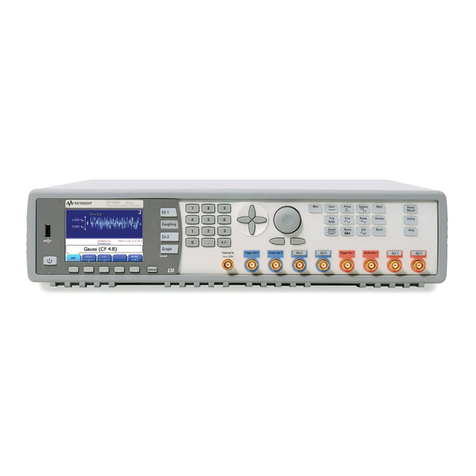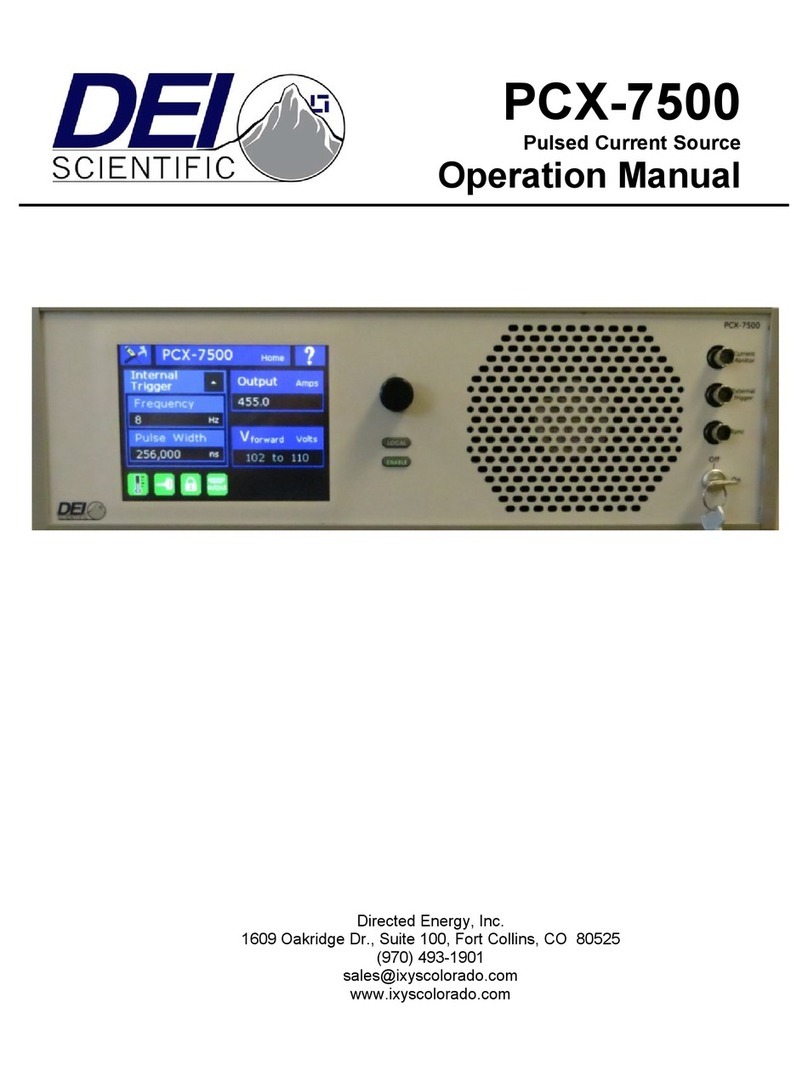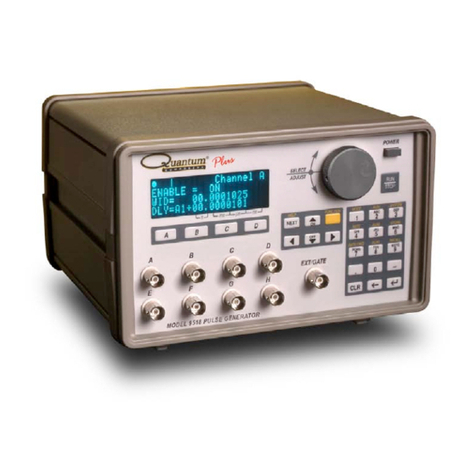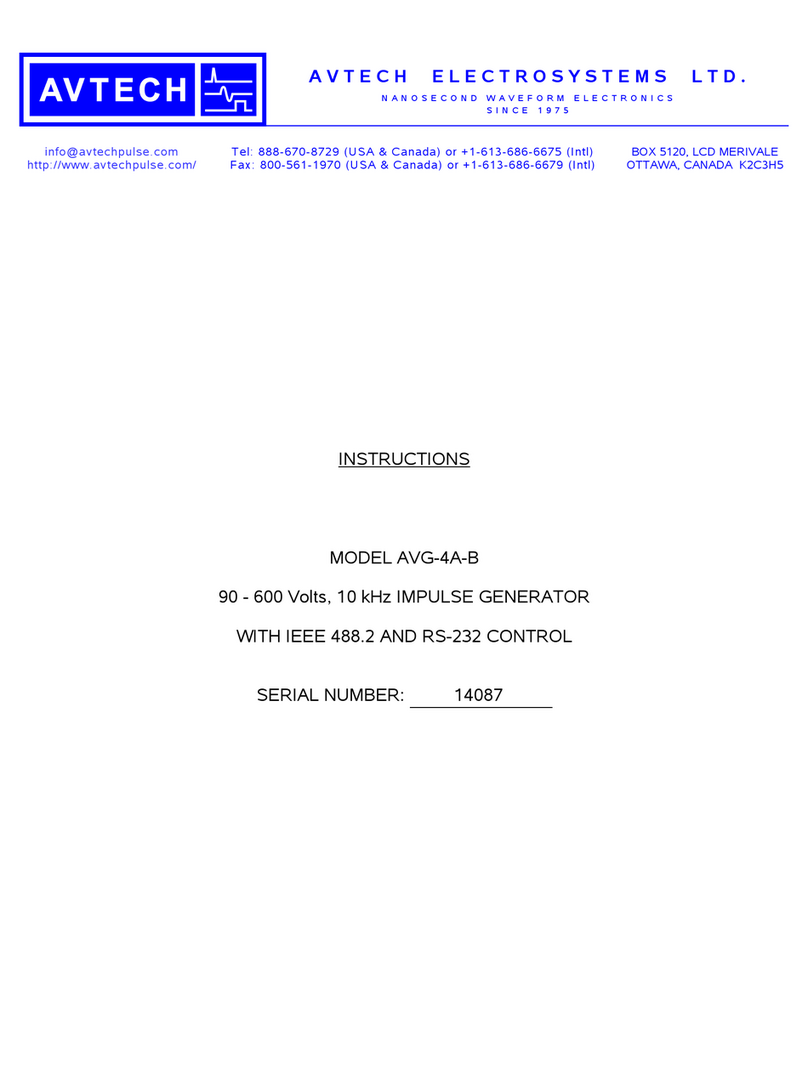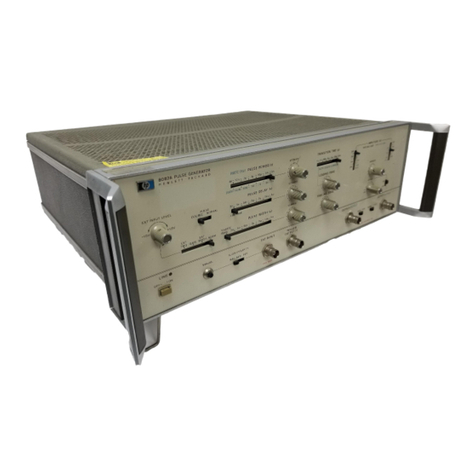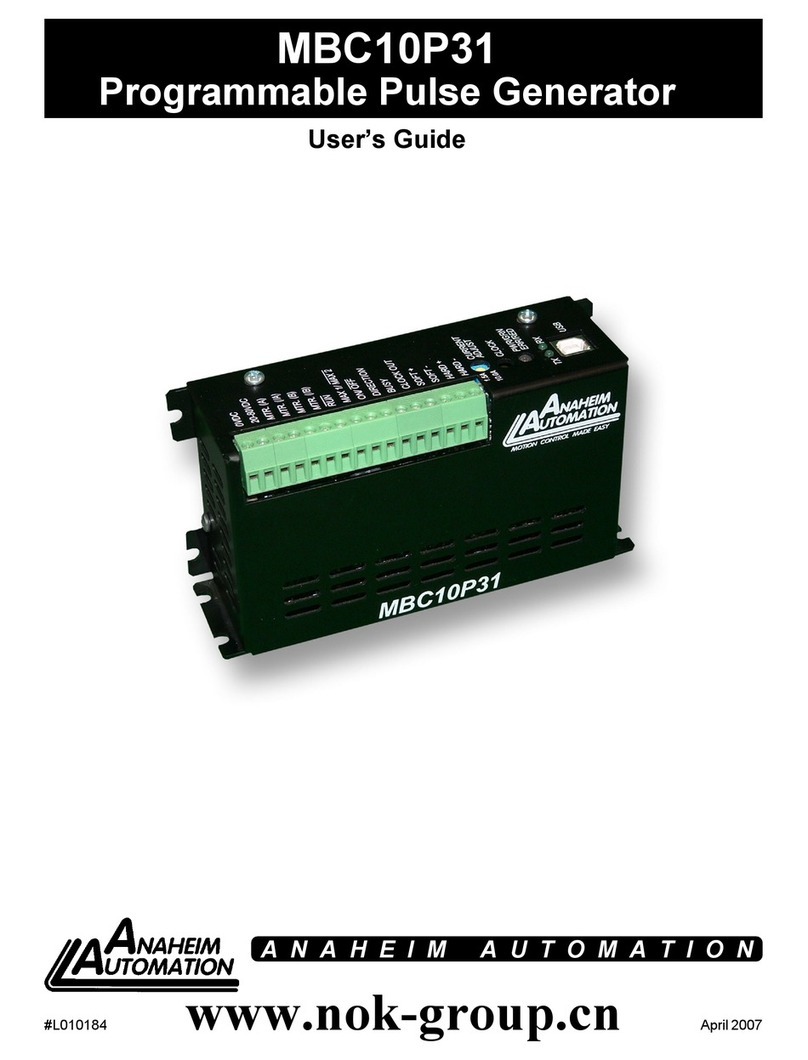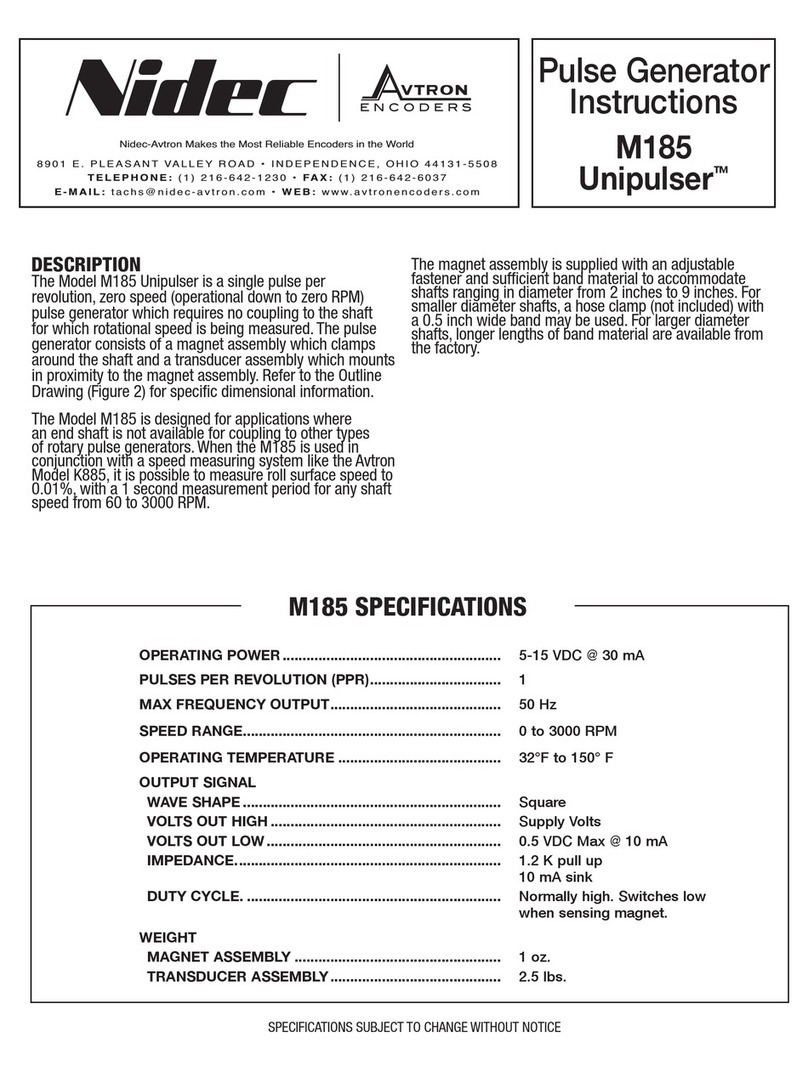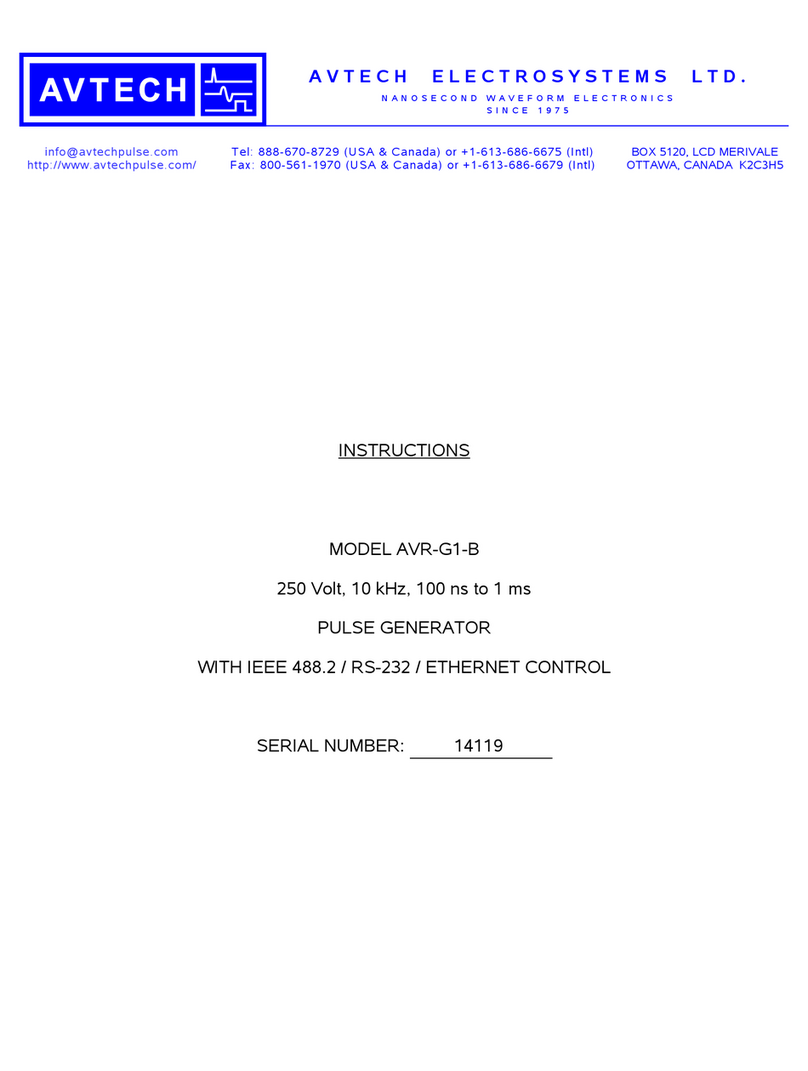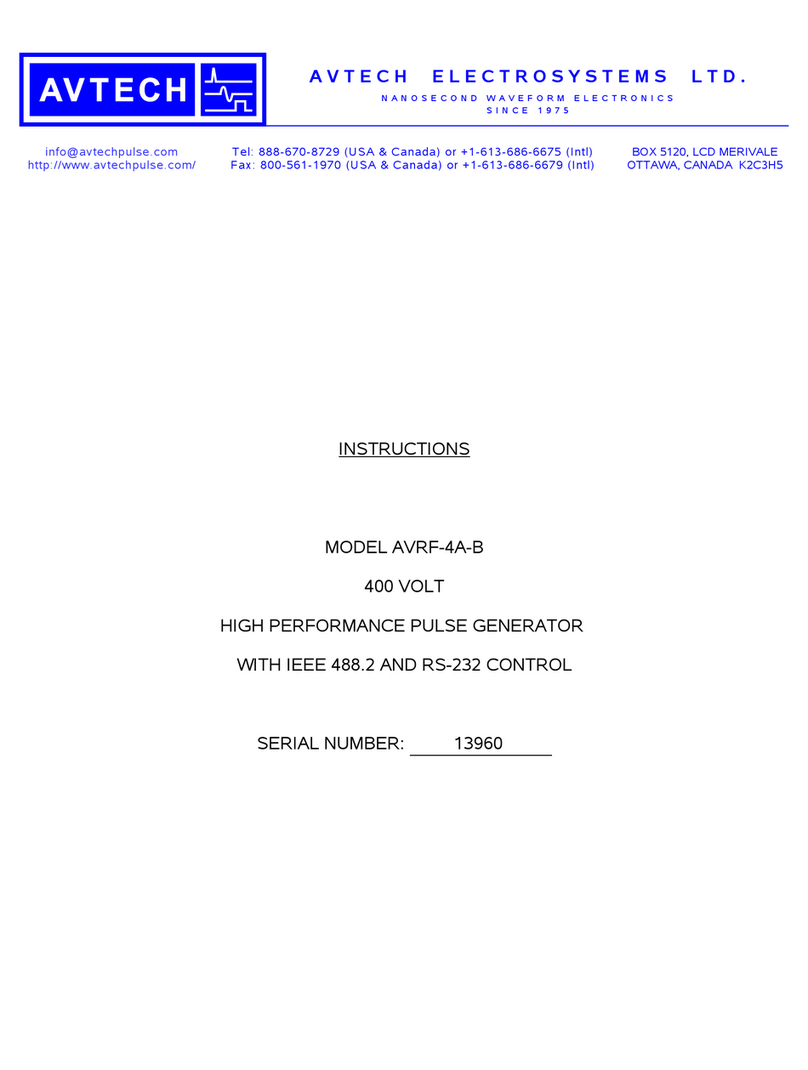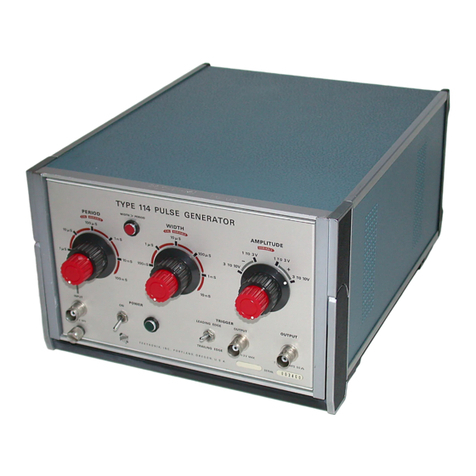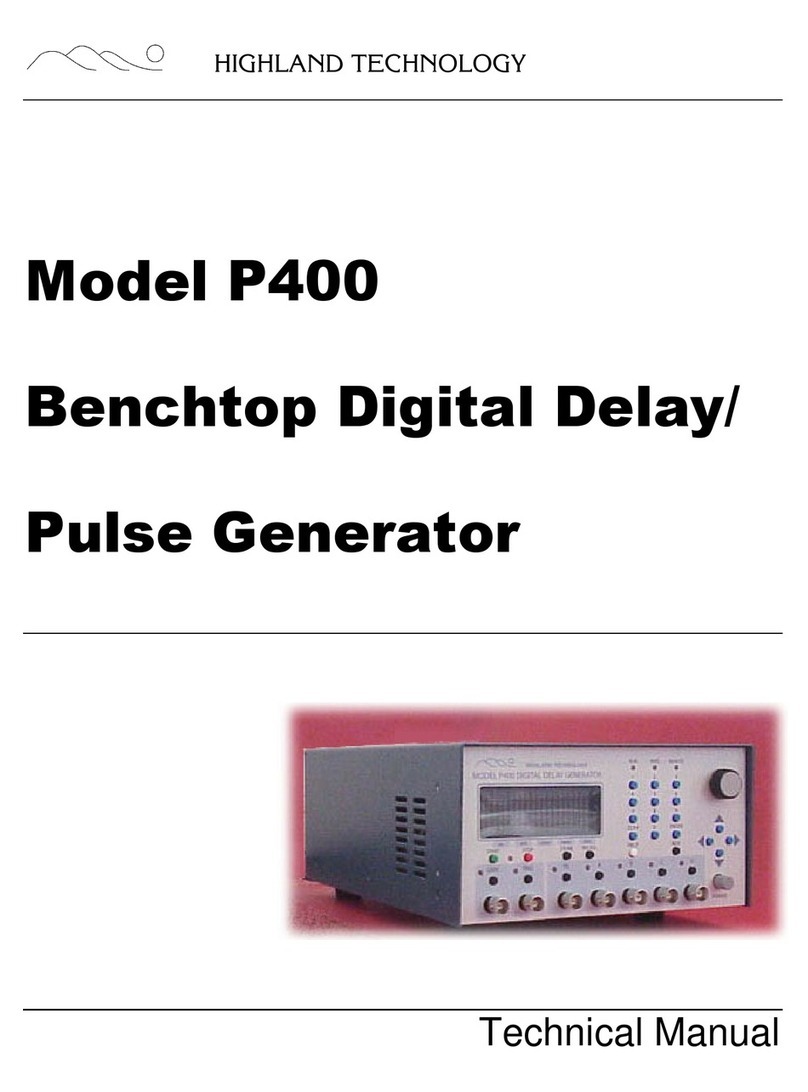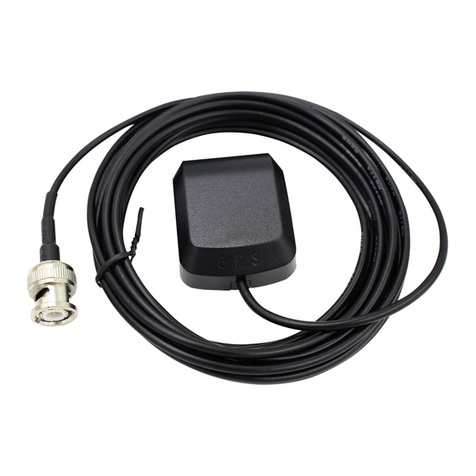
4
Fig. 4.1. Measuring Amplifier and Detector Noise
Resolution.
BNC connector CN2. This tes t point has a 470Ù
series resistor connecting it to CN2.
4.4. TYPICAL OPERATING
CONSIDERATIONS
Charge and Voltage Terminators A charge
terminator that consists of a 100Ùshunt resistor
with a 2-pF series capacitor is supplied for use with
ORTEC charge-sensitive preamplifiers. When this
terminator is used, the maximum output pulse is 5 V
on 10 pC (220 MeV for silicon diode detectors).
When the charge terminator is used to drive a
charge-sensitive preamplifier, a coaxial cable having
an impedance of approximately 100Ù(RG-62/U)
should be used between the pulse generator and
the charge terminator. The terminator should be
located at the input connector of the preamplifier.
The charge terminator may be used with or without
a detector being applied to the input of a
preamplifier. If a detector is connected to the
preamplifier, detector bias must be applied to
reduce the effective detector capacity shunting the
charge-sensitive preamplifier input. Also, with the
charge terminator used simultaneously with a
semiconductor detector, it must be remembered that
the charge terminator effectively shunts the detector
with approximately 2.5 pF of shunt capacity, which
will correspondingly degrade the signal-to-noise
performance of the preamplifier.
For voltage drive to an instrument under test, use
coaxial cable having an impedance of
approximately 100Ù(RG-62/U) between the pulse
generator and the instrument under test. Place a
100Ùtermination at the instrument end of the cable
in shunt with the input of the instrument.
Calibrating the Test Pulser and Amplifier for
Energy Measurements The 480 may easily be
calibrated so that the maximum Pulse Height dial
reading (1000 divisions) is equivalent to a specific
MeV loss in a radiation detector. The procedure is
as follows:
1. Connect the detector to be used to the
spectrometer system, i.e., preamplifier, main
amplifier, and biased amplifier.
2. Allow particles from a source of known energy
(alpha particles, for example) to fall on the detector.
3. Adjust the amplifier gains and the bias level of the
biased amplifier to give a suitable output pulse.
4. Set the pulser Pulse Height potentiometer at the
energy of the alpha particles striking the detector
(e.g., for a 5.1-MeV alpha particle, set the dial at 510
divisions).
5. Turn on the pulser; use the CaI potentiometer and
the Attenuator switches to set the output due to the
pulser to the same pulse height and shape as the
pulse obtained in step 3.
Amplifier Noise and Resolution Measurements
As shown in Fig. 4.1, a preamplifier, amplifier, pulse
generator, oscilloscope, and wide-band rms
voltmeter, such as the Hewlett- Packard 400D, are
required for this measurement. Connect a suitable
capacitor to the input to simulate the detector
capacitance desired. To obtain the resolution spread
due to noise:
1. Measure the rms noise voltage (Erms) at the linear
amplifier output.
2. Turn on the 480 and adjust the linear amplifier
output to any convenient readable voltage, Eo, as
determined by the oscilloscope.
The full width at half maximum (FWHM) resolution
spread due to the amplifier noise is then N(FWHM)
= 2.66 Erms Edial/Eo, where Edial is the pulser dial
reading in MeV, and the factor 2.66 is the correction
factor for rms to full widt h at half maximum (2.35)
and noise to rms meter correction (1.13) for average
indicating voltmeters such as the Hewlett-Packard
400D. The resolution spread will depend upon the
total input capacity, since the capacitance degrades
the signal-to-noise ratio much faster than the noise.
A typical resolution s pread versus external input
capacitance in the RC mode is shown in Fig. 4.2.
Amplifier Noise a nd Resolution Measurements
